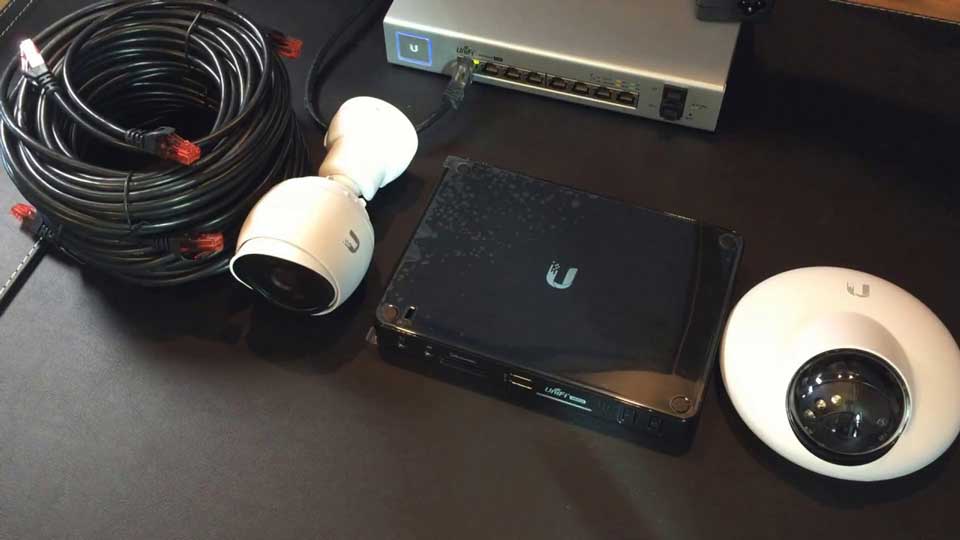How to Set Up UniFi, UniFi is a powerful and intuitive operating system enabling an end-to-end management experience for all of your IT needs. When paired with our specially designed hardware, you will have unparalleled control over your network and WiFi, security cameras, VoIP phones, door access, smart enterprise lighting, digital signage, and much more!
UniFi OS is pre-installed on UniFi Consoles, streamlining the setup process so you can get your network up and running quickly. Although it is possible to self-host the UniFi Network Server or setup Access Points (APs) in Standalone Mode, these methods lack key advantages including automated backups, system updates, and more advanced software offerings.
If you are new to UniFi, we encourage you to check out Introduction to UniFi to learn more about device adoption, remote management, and the UniFi ecosystem in general.
Have You Purchased a UniFi Console?
Our UniFi Consoles are built to run UniFi OS and come pre-installed with all UniFi Applications. This includes things like the Dream Machine, Dream Router and Cloud Key G2 Plus. With these consoles, it’s easy to automatically establish backups, update hardware and software, and ensure maximum compatibility by minimizing third-party inter-operation.
Set Up a Console
UniFi Consoles can be setup from the web or our mobile app. Regardless of which method you choose, you will be able to continue managing UniFi both via the mobile app and web following the initial setup.
Using the Mobile App (Recommended)
Using a Web Browser
Do You Have an Access Point Without a Console?
Standalone Mode should only be used when configuring a small quantity of APs because they do not support seamless roaming. Instead, you will need to manually connect to each AP as you move out of range. Also, APs must have a wired connection to your network; wireless meshing is not possible. Finally, remote management is not possible because it is done entirely through the UniFi Mobile app while locally connected to your WiFi.
For information on Standalone Access Points, check out our article here.
How to Set Up UniFi
Read More : How to set up a Hikvision CCTV system
Do You Plan to Host a Server Yourself?
UniFi can also be self-hosted on a Windows/macOS/Linux machine, but this is only recommended for users proficient with network administration, because it requires constant and precise attention. You’ll need to manually configure your network for sufficient communication between UniFi Network and all of your networking devices. Success hinges on your ability to continuously navigate various third-party software, firewalls and other networking devices.
For information on Self-Hosting, check out our article here.
Common Troubleshooting
Our setup flow is designed to be as seamless as possible. However, some circumstances, often related to external network configurations, may cause setup failures.
Check Your Physical Connections
Ensure that your power and network connections are secure. If they are, but your issue persists, we recommend using our UniFi cables for optimal compatibility and performance.
Verify Your UniFi Console’s Internet Connection
UniFi Cloud Gateways (UniFi Consoles such as our Dream products, which contain an integrated security gateway) are usually connected directly to the internet. However, non-gateway consoles, such as the Cloud Key Gen2 Plus, can be incorrectly placed on a network or VLAN with restricted internet access. Please ensure this isn’t the case for your consoles.
Update to the Latest Version of UniFi OS
For the best setup experience, we recommend updating to the latest version and ensuring that automatic updates are enabled.
Open All Required Ports
Third-party gateways, firewalls, and Internet Service Provider (ISP) modems occasionally block traffic required for set up. Some of these include:
See Required Port Reference for a complete listing of all requisite ports. You may wish to contact your ISP to ensure none of these are being blocked. We also recommend disabling any third-party firewalls.
Clone Your ISP Router or Modem’s MAC Address
Some ISPs restrict connectivity to certain MAC addresses. You may need to clone your modem or router’s MAC address in order to set up your UniFi Console. We recommend contacting your ISP first to confirm whether or not this is necessary.
Contact Your ISP
If you’ve tried all of the tips above but are still having setup issues, please contact your ISP to ensure that they have not restricted your UniFi Console’s connectivity.
Standalone Access Points (without UniFi)
UniFi access points (APs) can be set up and configured without any additional devices, but their features will be limited.
We recommend using a UniFi Cloud Gateway (e.g., Dream Machines and Dream Routers) or a dedicated UniFi Console (e.g., Cloud Key G2 Plus) to access our full features, including an integrated internet gateway for advanced network security, detailed traffic analytics, seamless VPN access, and powerfully intuitive Policy-Based Routing (PBR).
Limitations
Be aware of the following limitations of Standalone Mode:
Setting Up Your APs
Unable to Join the Network ‘UniFi’
Our APs broadcast a hidden WiFi used just for device setup. If you cannot connect to it, a mistake was made during your setup process.
My AP is not powered on, or in a factory state.
Your AP should emit a solid white LED indicating that it is turned on and ready to be set up. If the LED is off, make sure it is receiving proper power. Consult your AP’s specifications to confirm its required power input.
A solid blue LED indicates that the device was already set up. In this case, you should factory reset it and try again.
My AP does not have network connectivity.
APs must receive an IP address from your network- from your ISP modem, or a third-party router/gateway.
Verify if your AP has an IP address by using the Discovery feature in our WiFiman Mobile App (iOS / Android). If the device does not appear, or it appears with our ‘fallback IP address’ (192.168.1.20), this indicates a problem with your network’s configuration. Make sure your AP is properly connected to a local network port (LAN) of your modem or gateway/router.
UniFi – How to Reset Devices to Factory Defaults
A factory reset is useful for a creating fresh setup of a UniFi Console, or device that was already configured in a managed state.
Restoring with the Reset Button
All UniFi devices have a Reset button. You can return a device to a factory-default state by holding this for 5-10 seconds (depending on the device), or until the LEDs indicate the restore has begun. Your device must remain powered during this process.
Example: The diagram below illustrates how to locate this button on the UDM Pro.
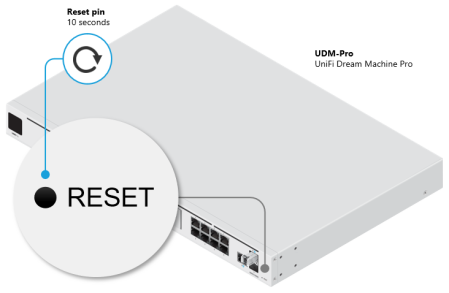
Restoring From Your UniFi Application
UniFi Devices
All UniFi devices can be restored to their factory defaults via their respective web or mobile applications. This is located in the Manage section of a device’s settings. Depending on the application, this may be referred to as Forget (UniFi Network) or Unmanage (UniFi Protect).
Selecting this option will unmanage the device from your UniFi Console and restore the device to a factory default state.
UniFi Consoles
A UniFi Console admin with Owner privileges has the ability to restore their console using the “Factory Reset” button located in the UniFi OS System settings.
Frequently Asked Questions
Why does my device still appear in my application after I restored it using the physical Reset button?
The physical reset button does not remove the device from any applications it was adopted to. This can be done under the Manage section of the device settings.
Why does my device say “Managed by Other”?
This will occur if the device was managed by another instance of a UniFi application. This includes cases where the UniFi Console (e.g., Dream Machine Pro, or Cloud Key) was factory restored, because the UniFi device still considers itself as being managed by the ‘old’ application console, prior to restoration.
There are several options to resolve this:
Note: This can only be done by the account owner and requires them to have previously signed into the mobile app while the device was managed.
Note: If you are self-hosting the Network application, you should only ever download the UniFi software on a single machine which will act as the UniFi Network Server. Some users mistakenly download this multiple times because they believe it is a requirement to manage their Network Application from other devices, but this is actually creating a completely new instance. To manage your network from another device, you can type in the IP address of the UniFi Network Server while connected to the same local network. Alternatively, you can enable Remote Access to manage your network anywhere. See Connecting to UniFi to learn more.
Why is my UniFi Device not factory restoring?
Ensure that your device remains powered on during the restoration process, otherwise it will not occur.
It is also possible that you held the button for too short of a time (resulting in a reboot), or too long of a time (resulting in entering TFTP Recovery Mode). Refer to our UniFi Device LED Status guide for more information.
UniFi Network – Understanding Device LED Status Indicators
Learn how to identify your device’s state based on the LED color patterns. These blue and white status LEDs apply to all our UniFi access points, routers, switches, and the UDM base model.
Status LED Patterns
Note: The animations are for illustrative purposes – the speed of the flashing or strobing patterns below might differ slightly from your device’s.
Flashing White / Off Every 1/2s
The device is initializing and booting up.
Steady White
The device is ready for adoption.
Slow Flashing Blue (UDM Only)
A client device is connected to the UDM via Bluetooth.
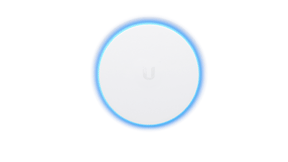
Blue and Flashing Off Every 5s (UDM Only)
There is no internet connection to the UDM.
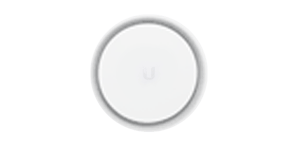
Steady Blue
The device is adopted and is in normal operating mode. Access Point is broadcasting WiFi.
Strobing White / Off
If this happens, power cycle the Access Point.
If this doesn’t help, please reach out to our support team.

Quickly Flashing White / Blue
The device firmware is currently being upgraded – do not interrupt the process.
UDM will flash only white during an upgrade.
Blue and Flashing Off Every 5s
Access Point has lost network connectivity and is searching for a wireless uplink.
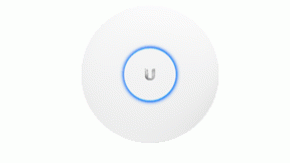
Rapid Flashing Blue / Off
The device “Locate” feature was activated in the UniFi Network application.
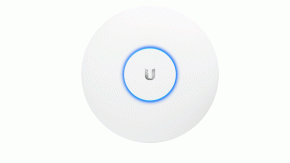
Flashing White-Blue-Off
The device is in TFTP mode.
To enable this mode:
If this wasn’t intentional, please ensure the device’s reset button isn’t jammed (it should click when pushed).
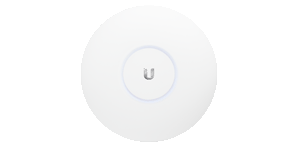
LED Off
The device is offline.
Verify the Power, POE, and Ethernet cables to troubleshoot.
UniFi Bridge to Bridge (UBB)
Including the statuses described above, the UBB has two additional ones:
Red with Circulating Blue LED
The 60 GHz link cannot be established or has dropped due to bad weather. If the UBB fails over to 5 GHz, the LED will remain red. When the 60 GHz link is re-established, the LED will turn blue (or the custom color selected in the UniFi Network application).
Note: If the other bridge device is within range and the UBB LED is red, we recommend adjusting the UBB’s position to enhance the signal strength.
Green
If the Alignment Tool enabled in the UniFi Network application, a green LED means the UBB devices are properly aligned.
Note: If the other bridge device is within range and the UBB LED is green and red, we recommend adjusting the UBB’s position until the LED is green.
LED Patterns for Ports
The ports of UniFi Security Gateways and UniFi Switches have a different type, number, and location.
Please refer to your specific device model’s Quick Start Guide (QSG) for the exact location and description of its ports.
Console Port’s right LED (in the applicable devices):
Speed/Link/Act (right LED ports other than Console):
PoE (left LED on ports of applicable devices):
SFP (in the applicable devices):
See specific port LED information in the Hardware Overview section (between pages 5 and 6) of the Quick Start Guides (QSG). You can find the QSGs in the Documentation section of our UniFi Downloads page, by searching for the device in question in the left-hand menu.
LED Patterns for PoE Adapters
LED is Off: PoE is Off.
LED is On and steady: PoE is functioning as it should.
LED is blinking: this is not a configured state, this may indicate that the device is not connected properly, or that something is wrong with the cable.
How to Disable Device LEDs
The device status LEDs can be disabled for all the site, or only for specific UniFi devices.
To enable/disable status LEDs throughout a site, go to to Settings > Site on the UniFi Network application and edit the LED feature in the Services section.
To configure specific devices individually:
Introduction to UniFi
UniFi is a powerful and intuitive operating system enabling an end-to-end management experience for all of your IT needs. When paired with our specially designed hardware, you will have unparalleled control over your network and WiFi, security cameras, VoIP phones, door access, smart enterprise lighting, digital signage, and much more!
Check out ui.com to learn how we can help simplify your IT management!
UniFi Consoles
The UniFi experience begins with one of our UniFi Consoles. These were created to run our UniFi software which allows you to manage your network and WiFi, security cameras, VoIP phones, door access and more!
UniFi Cloud Gateways combine the power of a UniFi Console with an integrated internet gateway. This brings you advanced network security, seamless VPN access, detailed traffic analytics and more.
A Cloud Gateway is all you need to hit the ground running with your home or office network.
For further customization, we offer specialty UniFi Consoles to fit specific needs:
Note: While some users choose to self-host their UniFi Network application, we do not recommend self-hosting unless you are highly familiar with networking administration. Invalid configurations may lead to system crashes, poor performance, and compromised network security.
For more details, please see our recommendations in Which Ubiquiti UniFi Console is Right For Me?
UniFi Applications
The UniFi application suite is thoughtfully constructed to serve a wide variety of technological needs within your home or business:
Adopting Devices
Device adoption is the process of setting up a device and linking it to the respective UniFi application so you can manage it. For more details, see Device Adoption.
Remote Access and Your UI Account
Your UI Account allows you to manage UniFi from anywhere in the world using our UniFi Site Manager at unifi.ui.com, or our UniFi Mobile Apps (iOS / Android). See Connecting to UniFi to learn more about remote and local connections.
Other benefits of using a UI Account include:
Standalone Access Points (without UniFi)
UniFi access points (APs) can be set up and configured without any additional devices, but their features will be limited.
We recommend using a UniFi Cloud Gateway (e.g., Dream Machines and Dream Routers) or a dedicated UniFi Console (e.g., Cloud Key G2 Plus) to access our full features, including an integrated internet gateway for advanced network security, detailed traffic analytics, seamless VPN access, and powerfully intuitive Policy-Based Routing (PBR).
Limitations
Be aware of the following limitations of Standalone Mode:
Setting Up Your APs
Unable to Join the Network ‘UniFi’
Our APs broadcast a hidden WiFi used just for device setup. If you cannot connect to it, a mistake was made during your setup process.
My AP is not powered on, or in a factory state.
Your AP should emit a solid white LED indicating that it is turned on and ready to be set up. If the LED is off, make sure it is receiving proper power. Consult your AP’s specifications to confirm its required power input.
A solid blue LED indicates that the device was already set up. In this case, you should factory reset it and try again.
My AP does not have network connectivity.
APs must receive an IP address from your network- from your ISP modem, or a third-party router/gateway.
Verify if your AP has an IP address by using the Discovery feature in our WiFiman Mobile App (iOS / Android). If the device does not appear, or it appears with our ‘fallback IP address’ (192.168.1.20), this indicates a problem with your network’s configuration. Make sure your AP is properly connected to a local network port (LAN) of your modem or gateway/router.
Introduction to UniFi
UniFi is a powerful and intuitive operating system enabling an end-to-end management experience for all of your IT needs. When paired with our specially designed hardware, you will have unparalleled control over your network and WiFi, security cameras, VoIP phones, door access, smart enterprise lighting, digital signage, and much more!
Check out ui.com to learn how we can help simplify your IT management!
UniFi Consoles
The UniFi experience begins with one of our UniFi Consoles. These were created to run our UniFi software which allows you to manage your network and WiFi, security cameras, VoIP phones, door access and more!
UniFi Cloud Gateways combine the power of a UniFi Console with an integrated internet gateway. This brings you advanced network security, seamless VPN access, detailed traffic analytics and more.
A Cloud Gateway is all you need to hit the ground running with your home or office network.
For further customization, we offer specialty UniFi Consoles to fit specific needs:
Note: While some users choose to self-host their UniFi Network application, we do not recommend self-hosting unless you are highly familiar with networking administration. Invalid configurations may lead to system crashes, poor performance, and compromised network security.
For more details, please see our recommendations in Which Ubiquiti UniFi Console is Right For Me?
UniFi Applications
The UniFi application suite is thoughtfully constructed to serve a wide variety of technological needs within your home or business:
Adopting Devices
Device adoption is the process of setting up a device and linking it to the respective UniFi application so you can manage it. For more details, see Device Adoption.
Remote Access and Your UI Account
Your UI Account allows you to manage UniFi from anywhere in the world using our UniFi Site Manager at unifi.ui.com, or our UniFi Mobile Apps (iOS / Android). See Connecting to UniFi to learn more about remote and local connections.
Other benefits of using a UI Account include:
Connecting to UniFi and Remote Management
UniFi allows you to access and manage your UniFi ecosystem from a web browser or our UniFi Mobile Apps, with ease and security.
Using a Web Browser
It’s easy to connect to your UniFi Console through your preferred browser. We generally recommend using the UniFi Site Manager for a simple, secure, and convenient way to manage all UniFi deployments associated with your UI Account.
How to Connect Remotely (UniFi Site Manager)
How to Connect Locally (Local Site Manager)
The Local Site Manager is great when the remote UniFi Site Manager is unavailable, for example during an Internet outage. You may also note improved UniFi dashboard load times and lower latency when locally viewing high-bandwidth recordings from UniFi Protect.
Using a Mobile Device
Download our UniFi Mobile App (iOS / Android) and sign in using your UI Account to automatically see all UniFi Consoles compatible with UniFi OS associated with that account. If you have not enabled Remote Management, you can do so within your UniFi OS settings*.
*UniFi Consoles that are not compatible with UniFi OS, such as legacy Cloud Keys and self-hosted Network Servers can find this in Settings > System > Administration.
Local-only Access
Some users may optionally add a local-only connection. This is done by manually specifying your UniFi Console’s IP Address, Port (8443 for self-hosted Network Servers, and 443 for consoles running UniFi OS), Username*, and Password. Please note that restrictive network configurations or firewall rules may inhibit your ability to connect using this method.
*UniFi Console (Dream products, Cloud Key Gen2 Plus, etc.) offline without a UI Account, the default username is ‘admin’.
Direct Connections
Direct Connections establish a higher-performing management session when connecting with your UniFi Console. This is useful for any remote admin who regularly checks video footage, or manages a very large network with multiple access points. You can learn more here.
For your convenience, the UniFi Site Manager automatically establishes a Direct Connection when you are on the same local network as your UniFi Console.
Direct Remote Connections
It is also possible to establish a Direct Connection when remotely connected through the UniFi Site Manager from outside of your network. The Direct Remote Connection setting can be enabled in either your UniFi OS settings, or your UniFi Network Advanced Settings.
Note: This setting requires a UniFi Gateway with a public IP. Additionally, TCP Port 443 must be open and not used in a port forward rule.
Remote Access Privacy and Security
Remote access is a secure method of connecting to your UniFi Console from anywhere using your UI Account credentials. We prioritize facilitating direct connections with your local UniFi Console as a means of bolstering data security and optimizing low-latency connectivity. A new admin must be invited by the UniFi Owner in order to gain access. Once granted access, our UI Accounts support multi-factor authentication to ensure maximum security.
